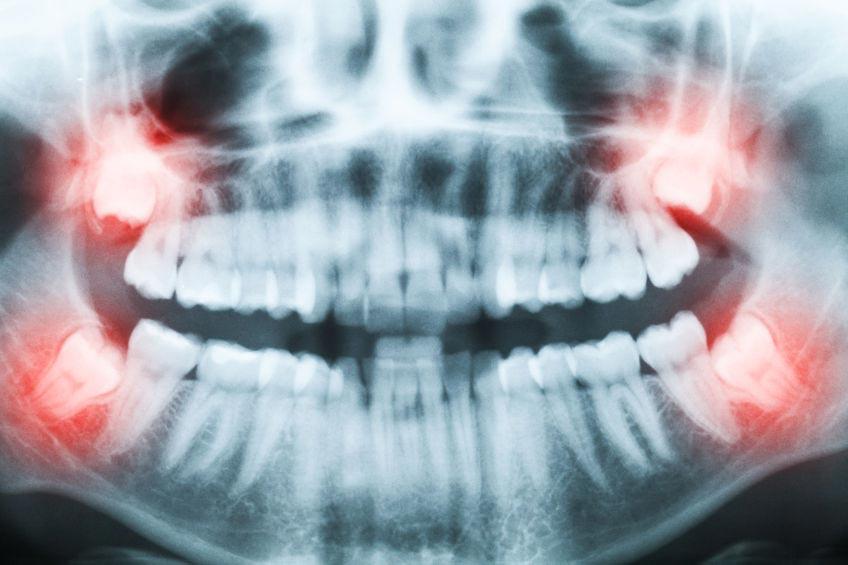The wisdom tooth is the eighth tooth in your jaw. Human evolution has led us to this point where some of the people don’t have wisdom teeth. The position of a wisdom tooth is often irregular, and that prevents it to grow normally in your mouth. When the tooth does not stand precisely in the direction of its growth, it begins to push its surrounding structures (teeth, bones, gums) and causes pain.
When the wisdom tooth starts to grow, it makes the opening in the gums but does not get out of them until the end. This hole in the gums is the place where food is retained, and therefore the bacteria can thrive. Bacteria from food cause inflammation of the gums around the wisdom tooth. The gums become painful, enlarged and swollen, and the pain can radiate to some other structures in the head.
Because all of this, wisdom teeth are regularly being removed. The extraction of this teeth can be don one by one, or you can have all 4 of them removed at once. In an arrangement with a dentist, this intervention can be done in a local or in general anesthesia.

How hard the procedure of wisdom tooth removal is going to be depends on its position and anatomy. On the X-ray, the doctor can see how the tooth is positioned in the bone and what kind of roots does it have. In some cases, when the position of the wisdom tooth is favorable for the extraction, it can come out easily. In other cases, the tooth may first need to be broken into smaller pieces, which are then extracted one by one.
Post-Operative Instructions
- Apply an ice bag on your face, hold it for 10 minutes on and 5 minutes off.
- After having a tooth removed, take all the medications that have been prescribed to you.
- In the first 24 hours, don’t eat and drink anything that is hot.
- Avoid swooshing the fluid in your mouth and don’t use the straw for the first few days after the tooth removal.
- It’s important to maintain regular oral hygiene so that bacteria don’t stay in your mouth and thus endanger the wound.
- Wash the teeth around the wound carefully so as not to damage the suture.
- Come for the suture removal as planned.
- Do not touch the wound with your tongue or fingers.
- If necessary, take some painkillers.
- Avoid smoking for several days after tooth removal.
- If you feel a severe pain or you notice an abnormal bleeding, contact us immediately.
